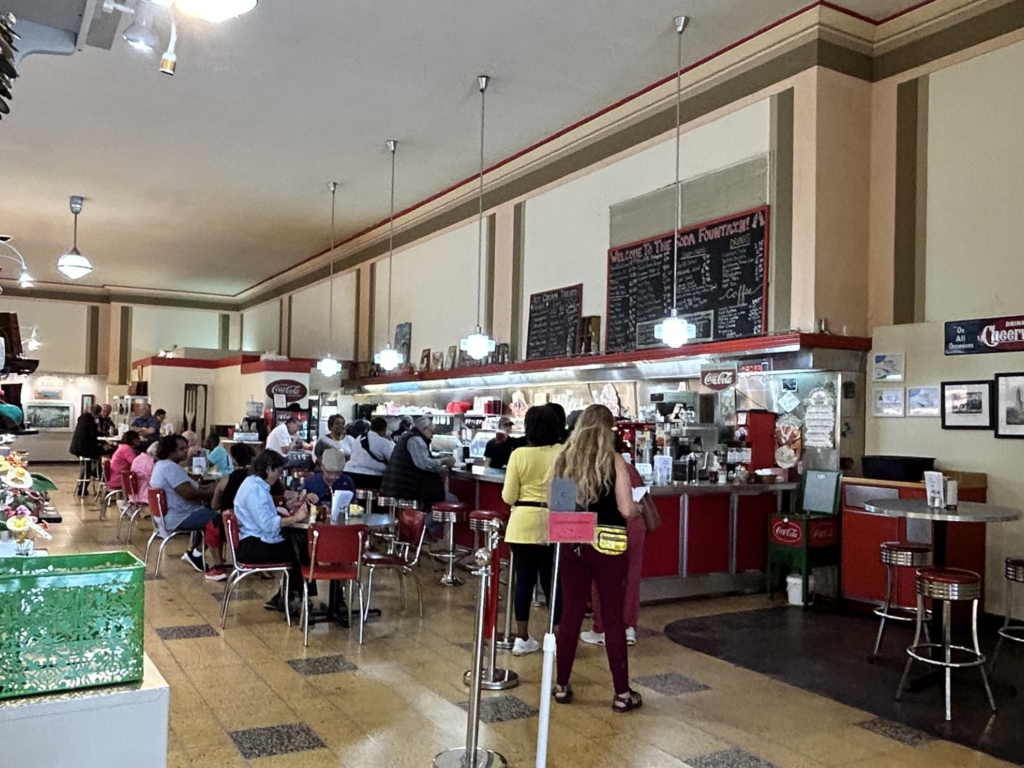Editor’s note: As the F.W. Woolworth Co. Building and other sites in downtown Asheville are being considered for historic landmark status, 828newsNOW reached out to some of those who made history there. On July 23, Asheville City Council voted unanimously to adopt an ordinance designating the Woolworth Building, located at 25 Haywood Street, as a local historic landmark.
ASHEVILLE, N.C. (828newsNOW) — When a group of African-American college students staged a sit-in at a segregated Woolworth’s lunch counter in Greensboro in 1960, they sparked longtime friends Marvin Chambers and James Ferguson into action in Asheville.
The Stephens-Lee High School classmates and some of their friends formed the Asheville Student Committee on Racial Equality (ASCORE) in 1960.
“We went to the establishment to integrate the city. They were not interested,” said Chambers, who still lives in Asheville. “We were supposed to have been able to maintain our place.”

Instead of sitting quietly, the students began planning.
“When the sit-ins went down in Greensboro, a group of us got together and decided we wanted to do something here. There wasn’t a Black college here, but there was a Black high school, and we wanted to do something” Chambers said.
“We met. We talked. We strategized. We were an action group, never an organization,” said Ferguson, who is an attorney in Charlotte. “We talked among ourselves and decided to desegregate stores that had lunch counters.”

Kress, Newberry and Woolworth: those were the three they identified initially, Ferguson said.
The students weren’t alone in their efforts. ASCORE had adult advisers, people with the same ideals and goals.
“We would meet. Our advisers would advise us,” Ferguson said. “So we would have a greater understanding of non-violent protests, we studied Dr. King, we studied Ghandi.”
He said the students learned the three parts of the non-violent protest process included identifying the problem, trying to solve the problem through negotiation and taking direct action, sit-ins in this case.
“We actually never got to sit-ins in that initial phase because when we started negotiating we were able to arrange to desegregate those lunch counters without having to do direct action, sit-ins, protests, that sort of thing,” Ferguson said.
A compromise was reached.
“We would arrive at a certain time with the understanding we would be served,” Ferguson said. “We found a number of supportive white people in the community who agreed to eat with us.”
TOUR SHEDS LIGHT ON THE DIRTY LAUNDRY THOMAS WOLFE AIRED
Asheville’s status as a destination place likely had much to do with the business owners’ decision to desegregate.
“I suspect one reason we were able to succeed in that is that Asheville as a tourist town did not want the blemish of sit-ins or protests,” Ferguson said.
Chambers agreed.
“One thing we had in our favor, we knew they didn’t want any publicity,” he said.
The Woolworth lunch counter in Asheville served its first Black customers without incident on Aug. 15, 1960, city documents said.

History remembered
The F.W. Woolworth Co. Building is now being considered for a local historic landmark designation. The building, which opened in 1939, “is a locally significant landmark for its Art Deco façade, its association with the commercial development of downtown Asheville through the twentieth century, and its importance as a site of local civil rights protests and activism in the 1960s,” according to city documents.
The Historic Resources Commission will hold a public hearing on the designation at its June 17 meeting, and the designation will be considered by Asheville City Council at a public hearing later in the summer.
The Woolworth Building, designed by noted local architect Henry Gaines, now houses the Woolworth Walk, a privately and locally owned gallery in the heart of downtown.
Items listed as part of the historic designation include the exterior of the Woolworth Building, as well as the lunch counter and stools, center row of square posts, plaster moldings at the ceiling and terrazzo floors.
City documents noted, “the lunch counter and stools are not original to the building, but the replicated elements and original back bar serve to maintain the character of the Woolworth’s lunch counter from the period when local students staged protests to integrate downtown restaurants and businesses.”

The other landmarks
The Kress Building was renovated and divided into residential and retail condominiums in 2002. The Kress Emporium anchors the building’s retail space and showcases a collection of dozens of local artists.
The Newberry Store Building was destroyed by fire on Jan. 17, 1945, according to city documents.


